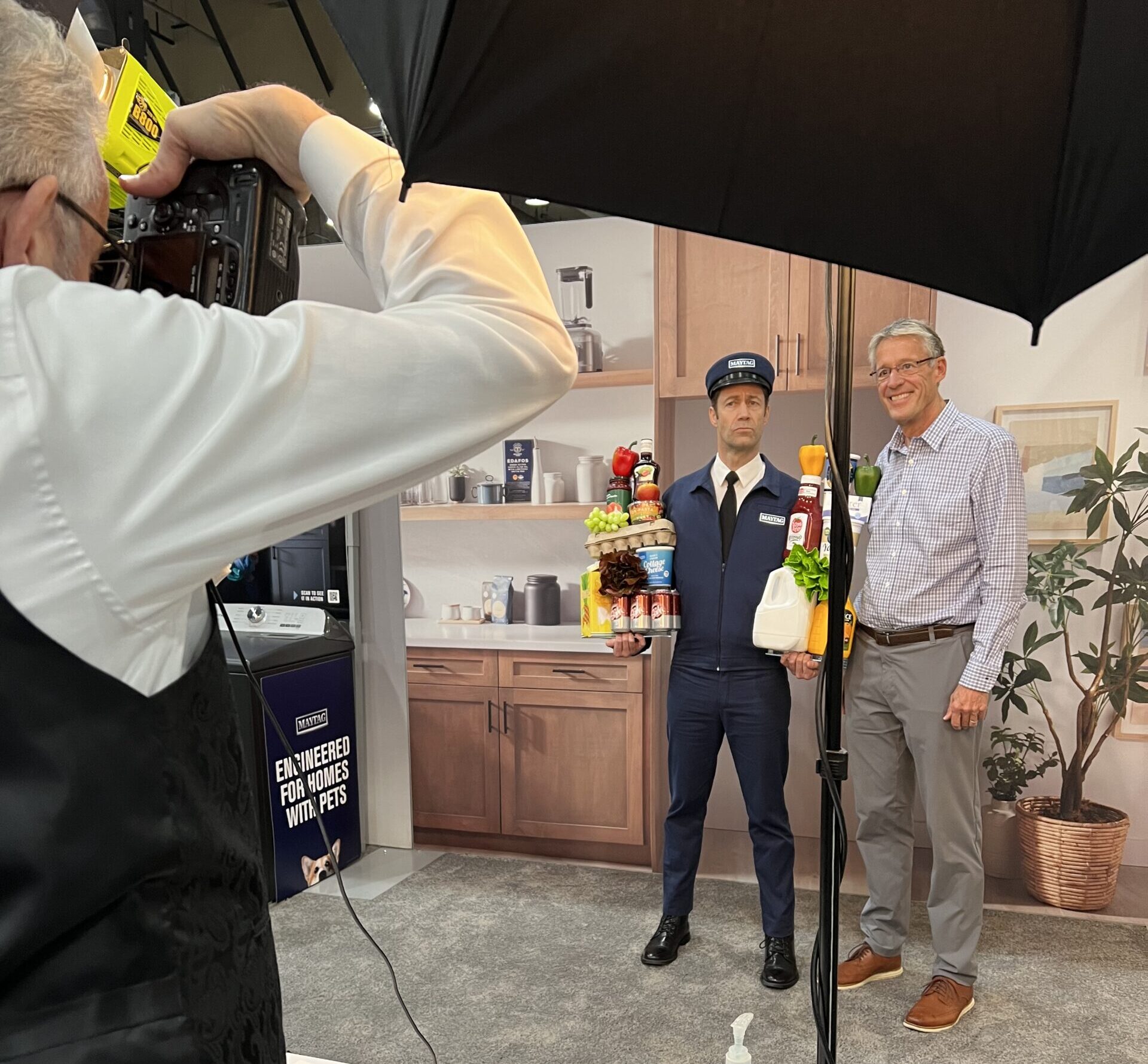Do you know the Maytag Man? Not to be confused with the Maytag Repairman who served the brand for over 40 years, the Maytag Man first appeared in 2014 to replace his predecessor as Maytag’s new brand mascot. Why the switch?
According to then Vice President of Marketing for Whirlpool, James Oh, the Maytag brand wanted to emphasize its products’ “reliability, durability and power” in a new way. Rather than build messaging around a bored repairman with nothing to repair, the brand pivoted to a mascot who — while human — embodies the product itself. As Oh put it, “The Maytag Man is now the actual machine, symbolizing the reliability, durability and power that Maytag® appliances are known for.”
Human brand mascots are nothing new. Long before the Maytag Repairman came in the scene in 1967, other human or human-esque mascots emerged — some of whom still exist today. Take the Quaker Oats man featured on every Quaker product in the grocery store. His iconic face has been synonymous with the brand since 1877. And an early version of the iconic Michelin Man was first displayed at a fair in 1894.
From Ronald McDonald (1963) and Mr. Clean (1957) to Snap, Crackle and Pop (1928), many mascots have not only stood the test of time to solidify brand recognition and identity but have also cemented themselves into our cultural history. While these human mascot examples are fictional characters, some brands opt to use a real person — or a character played by a real person.
MEET SWEET DREAMS’ SUPERHERO MASCOT “MATTMAN”
Nationwide Member, Sweet Dreams Mattress & Furniture out of North Carolina, offers an excellent example of a real human embodying a fictional character. Sweet Dreams’ superhero mascot “Mattman” comes to life for customers thanks to Andrew Schlesser, manager and “director of fun” on the Sweet Dreams’ Dream Team. Not only does Andrew dress as a caped mattress superhero at work, but he also wears a version of the costume while running marathons and attending events like NMG’s PrimeTime.
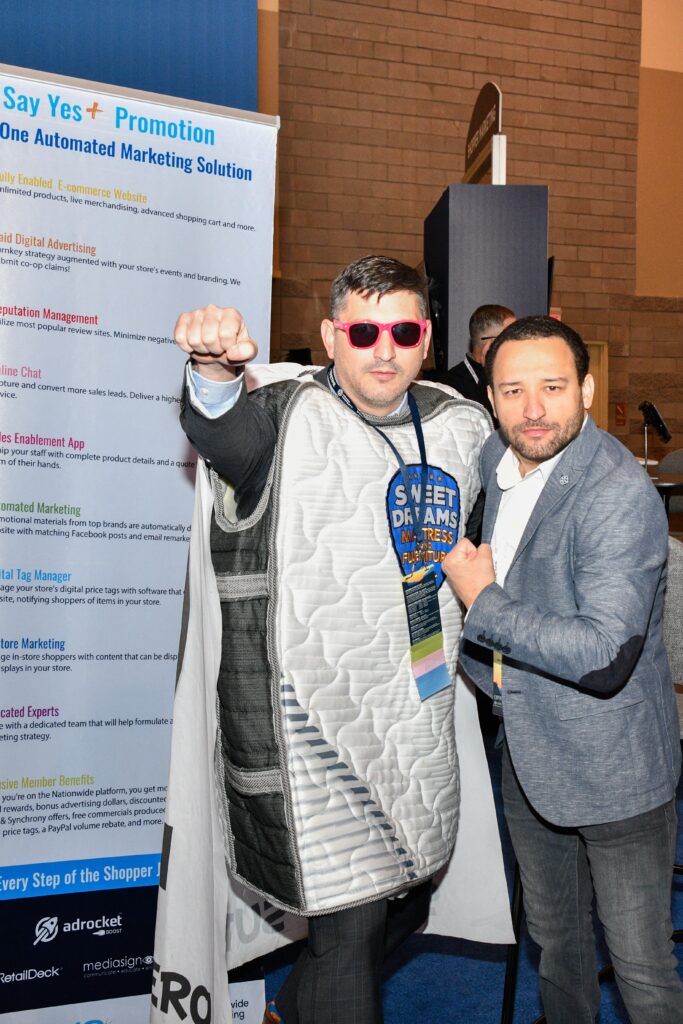
Sweet Dreams’ Andrew “Mattman” Schlesser at PrimeTime with NMG’s Rob Stott, associate director, marketing communications
During a live PrimeTime interview on the Independent Thinking Podcast, Andrew credited Nationwide for the push to differentiate. Dreaming up “Mattman” was one way to do that.
“We’re going for that in-store customer experience where it’s unique and it’s different and hello, I mean look at this. Right?” Andrew exclaimed, gesturing toward his costume. “And this is in store, like half the week I literally wear these things and engage with customers like this because, if you try to look like a big box store or a big player because they’re successful, they’re going to outspend you, like way out of the gate. There’s no chance. And you look exactly like them, so then what makes you any different?”
Watch the full interview with Andrew “Mattman” Schlesser.
MEET SMEDLEY THE “SILICA MAN”
Nationwide Member Silica For Your Home began serving the rural community of Silica, Wisconsin in 1922 — originally as a hardware store to support local farmers’ needs. Over the past 100 years, Silica has expanded into four locations around Wisconsin and transitioned out of hardware and into categories like appliances, electronics, furniture and outdoor. Yet, the Silica mascot, affectionately known as Smedley, hasn’t changed much since his introduction in the 1960s.
Given the store’s middle-of-nowhere location, Alphonse Schneider, Silica’s second generation president, worked with a local sign maker to create wooden signs for key intersections near the store that would point folks in the right direction. It was the sign maker who suggested using a character instead of an arrow to do the pointing. The result was “a friendly cartoonish man that looked like a farmer,” shared Josh Schneider, fourth generation Silica president. “At that time, it fit the image we wanted, a hard-working farmer who, at that time, was our main customer and understood the importance of service.” As for the cartoon farmer’s name, Josh added, “At some point and for a reason no one seems to recall, he was named Smedley.”
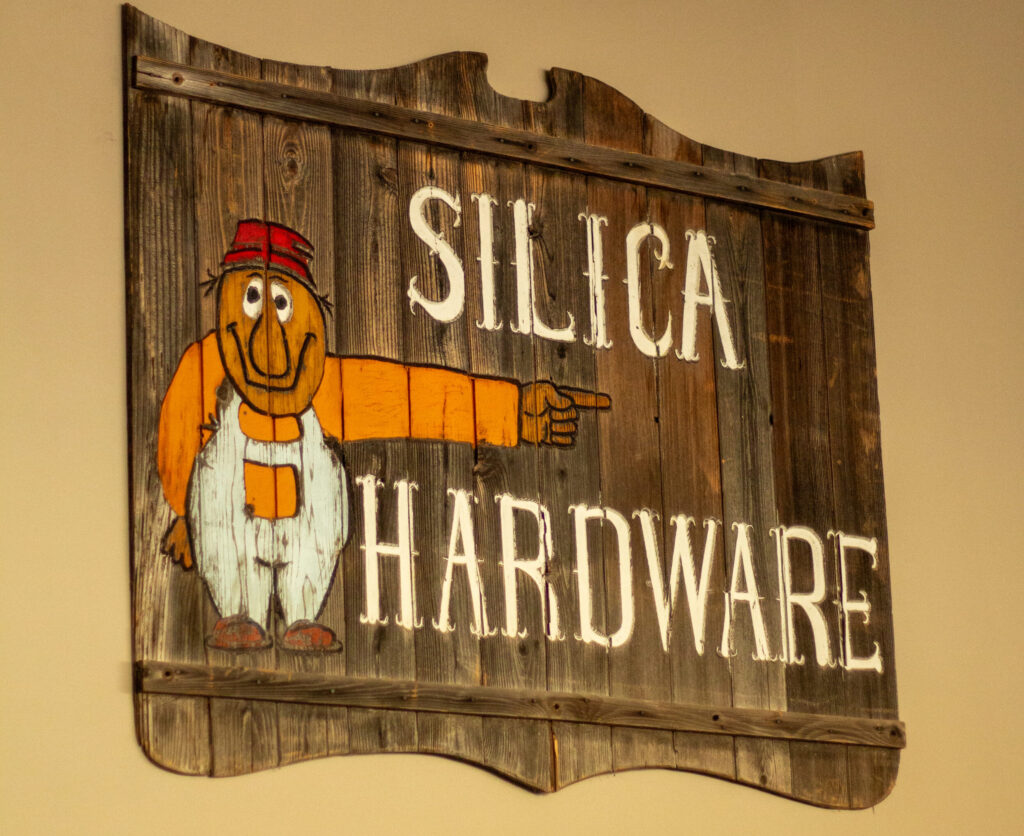
Photo credit: Silica
Silica’s Smedley is a prime example of a fictional character mascot that represents the brand without a physical human presence. Over the decades, Silica customers have come to recognize Smedley as synonymous with Silica, so much so that he has become fully integrated into Silica’s brand identity — on the logo, delivery trucks, service vans, in advertising and throughout each store, still directing customers. The giant wood-carved Smedley at the company’s Fond du Lac location is also quite popular with customers. In recent years, Smedley has appeared as an ice sculpture, a bobblehead and even an animated character on the local baseball stadium’s jumbotron in support of the Boys and Girls Club of Fond du Lac.
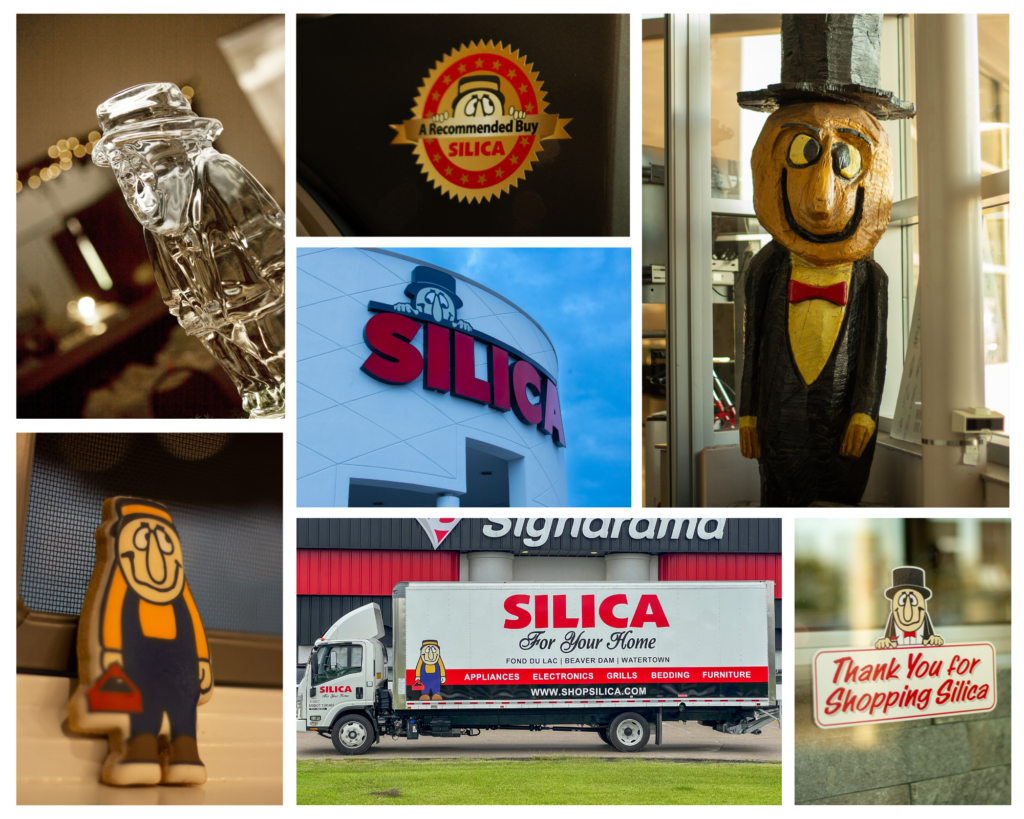
Photo credit: Silica
Impressively, Silica has retained the endearing character and values of Smedley while also allowing him to grow with the times and new technologies — and seasons with seasonal costumes for President’s Day, July 4th, Thanksgiving and Christmas. Clearly, the Silica team has fun using Smedley to engage with customers, but it goes beyond fun. As Josh puts it, “Although our company has grown, Smedley today still stands for honesty, hard work and integrity. Every time you see him, we want you to know you will be given our very best at all times.”
CLICK HERE to learn more about Smedley from the Silica team.
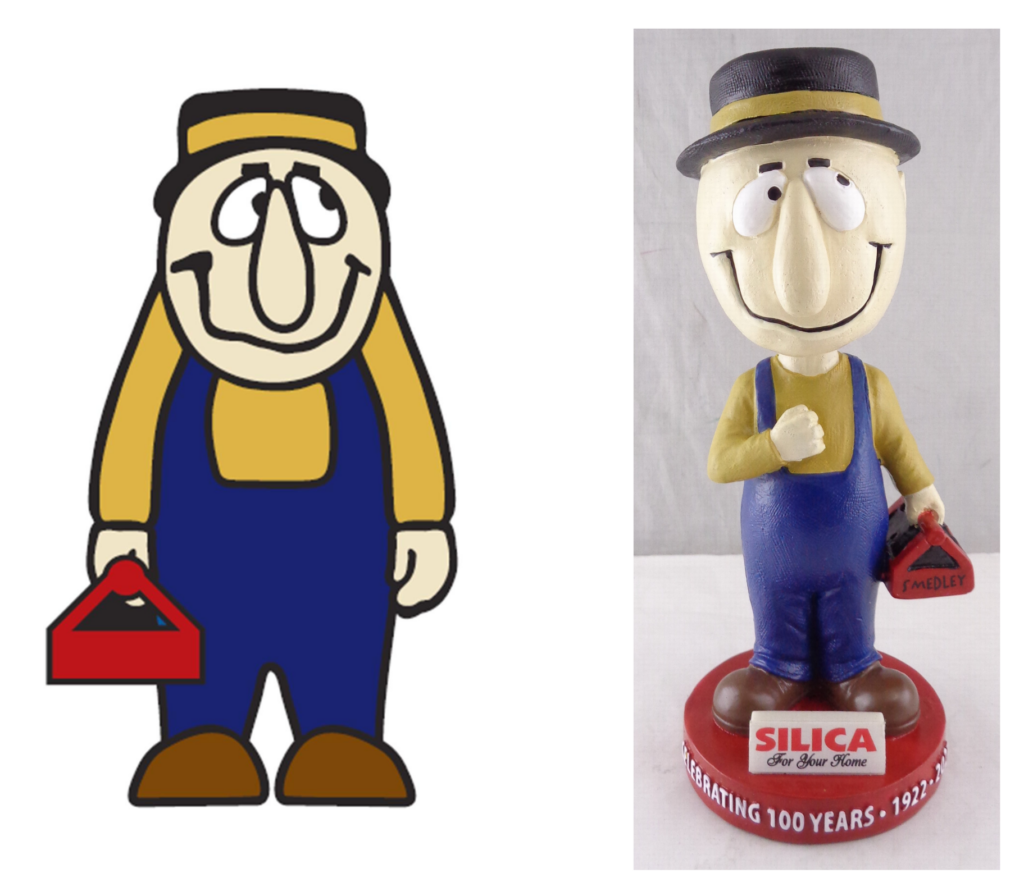
Photo credit: Silica
THE ROI IMPACT OF CREATING A BRAND MASCOT
The above examples show how a humanized mascot can impact overall brand sentiment and differentiation. But let’s look at the numbers.
A 2021 study by Moving Picture Company revealed that ads featuring characters outperformed those that did not by 7.9 percent in profit gain, 11.2 percent in market share gain and 8.9 percent in new customer gain. While this study analyzed ads with both human and animal character mascots, the interesting takeaway is that businesses with mascots — human or otherwise — tend to see a boost in key performance metrics.
Of course, if you’re not sure that creating a human mascot — real or fictional, cartoon or costumed — is the right fit for your brand, that’s okay. While mascots can boost a brand’s recognition and engagement with customers to ultimately boost sales, a mascot lacking authenticity and connection to the brand could just as easily flop. At the end of the day, it’s important to do your own research and assessment to determine what’s right for your business.

